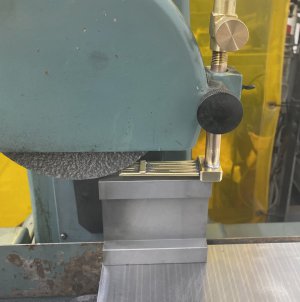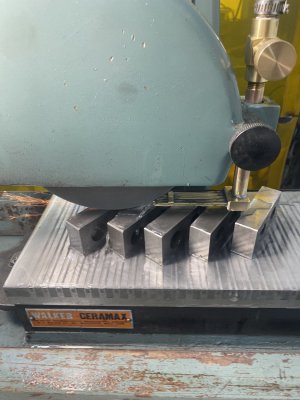I don't do well posting pictures, but will describe the tank, it is 16 X 20 1/2" and 16" deep and sits up on legs about 2" or so tall, water level is about 13" deep, there are two baffles extending across the 16" direction, they fit in between two formed angles (snugly) that are spot welded to the tank internal sides, the baffles are equally spaced on the 20.5 length of the tank, they extend to the bottom of the tank, and have two holes for circulation looking like a small window 6" down from the top and 4" high and 2 1/2" wide, located 1/2" from the edge, the holes are located at opposite sides of the tank. the pump suction is located about 8" down from the top of the tank in the last compartment of the tank, the inlet coming in at the opposite corner in the first compartment via a hose to near the bottom of the compartment. The tank is made is steel sheet and had numerous holes in the bottom in the form of pits, I blasted it clean and laid in a two part urethane goop to seal it up. I'm not sure that stainless would fare any better, as it is also attacked in situations that may be oxygen poor, as infrequently used machine coolant sumps sometimes get. I once saw a bowl of a centrifuge that was left after use and rinsed out, being sealed up it got an algal bloom, this depleted the oxygen and in the space of a year developed an area of pitting over 1/8" deep and several square inches in area, it was subsequently welded up and re machined.
My friend the engineer diagnosed the problem as "oxygen deprivation corrosion", common on areas underwater with agal growth.





